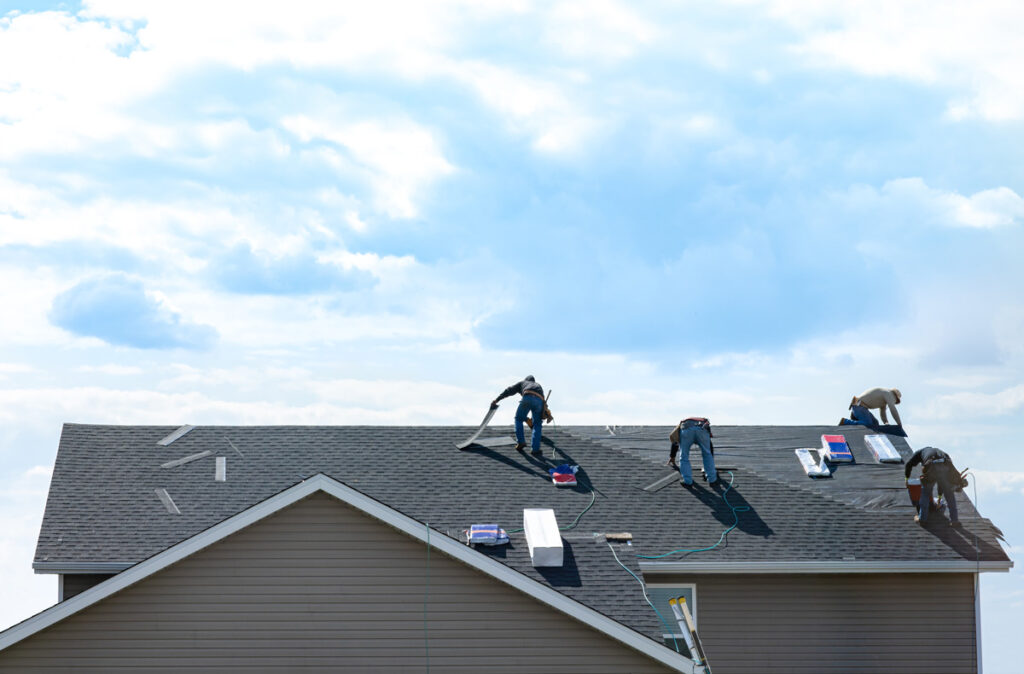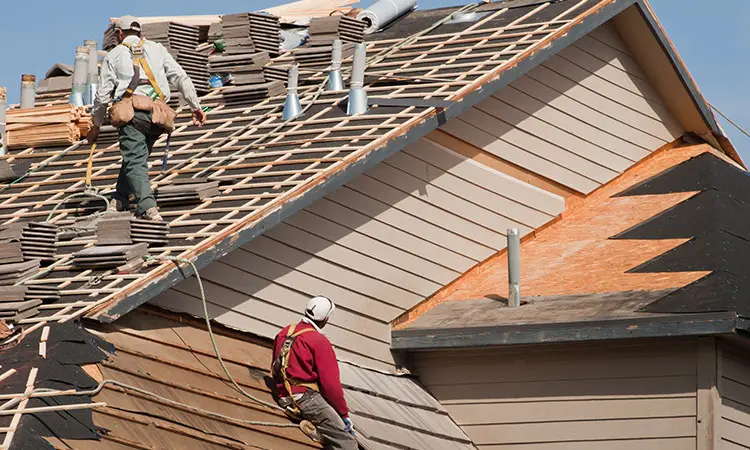Roof Repair Oahu: Specialist Roof Repairs for Lasting Security
Roof Repair Oahu: Specialist Roof Repairs for Lasting Security
Blog Article
Understanding the Different Sorts Of Roofs: A Comprehensive Guide for Homeowners
With a selection of options-- varying from the standard gable to the contemporary flat-- each kind offers special benefits and obstacles that should align with the home owner's ecological considerations and details requirements. As we explore the intricacies of different roofing system types, it comes to be obvious that one size does not fit all; the ideal selection might stun you.
Gable Roof Coverings
Gable roofing systems, identified by their triangular shape, are amongst one of the most prominent roof designs due to their simpleness and performance in shedding water and snow. This layout features two sloping sides that fulfill at a ridge, enabling efficient drainage and decreasing the danger of water build-up. The high pitch frequently related to saddleback roofs improves their ability to manage hefty rainfall, making them ideal for different environments.
Along with their useful benefits, saddleback roofs offer visual adaptability. They can be adjusted to numerous architectural styles, from traditional to contemporary homes. The style can additionally suit extra functions such as dormer windows, which boost all-natural light and air flow in the attic room area.
Furthermore, gable roofing systems offer adequate room for insulation, adding to power performance. Homeowners can choose from a selection of roof materials, consisting of asphalt roof shingles, steel, and ceramic tiles, further boosting modification choices.
In spite of their benefits, gable roof coverings may require added support in areas vulnerable to high winds or heavy snowfall. Generally, the saddleback roof continues to be a preferred choice due to its blend of functionality, resilience, and aesthetic charm.
Apartment Roofs
Level roofings are frequently identified for their minimal design and practical applications, especially in industrial and business settings (oahu roofing). These roofing systems feature a straight or almost horizontal surface, which enables for simple construction and functional room usage. While they might lack the aesthetic appeal of angled roofs, flat roofings provide various benefits, particularly in urban atmospheres where taking full advantage of room is essential
Among the key advantages of level roofings is their access. Homeowners can make use of the roofing room for different functions, such as roof gardens, balconies, or photovoltaic panel installations. Additionally, flat roof coverings are commonly much more cost-effective to keep and install contrasted to their sloped equivalents, as they require less materials and labor.
However, flat roofing systems do present certain obstacles. Appropriate water drainage is vital to avoid water pooling, which can lead to leaks and architectural damage. Hence, choosing top quality waterproofing products and regular assessments are critical for ensuring longevity. Typical products utilized for flat roof coverings include built-up roof (BUR), changed bitumen, and single-ply membranes, each offering unique benefits. In general, flat roofings function as a adaptable and practical choice for several property owners and organizations alike.
Hip Roof Coverings
Hip roofing systems are defined by their sloped sides that converge at the top, creating a ridge. This style stands out from saddleback roofs, as all four sides of a hip roof covering slope downwards toward the wall surfaces, giving an extra steady framework. The angle of the inclines can vary, permitting for versatility in building looks and performance.
Among the main benefits of hip roofs is their ability to endure hefty winds and damaging weather. The sloped surfaces enable much better water drainage, decreasing the danger of leaks and water damage. In addition, hip roofing systems supply raised attic room, which can be used for storage and even exchanged habitable areas.
However, constructing a hip roof can be much more complex and pricey than simpler roof covering kinds, such as saddleback roofs. The extra material and labor included in creating the slopes and guaranteeing proper architectural stability can bring about higher expenditures. Despite these downsides, numerous home owners prefer hip roofs for their toughness, aesthetic appeal, and possibility for energy effectiveness.
Mansard Roofings
Mansard roofs, typically acknowledged by their distinct four-sided design, feature two inclines on each side, with the reduced slope being steeper than the top. This architectural style, originating from France in the 17th century, is not just link visually attractive however useful, as it takes full advantage of the usable space in the top floors of a building. The steep lower incline permits for more headroom, making it an optimal option for loft spaces or attics, which can be converted into living rooms.
Mansard roofs are characterized Home Page by their adaptability, fitting numerous architectural designs, from standard to contemporary. They can be constructed with different materials, including asphalt tiles, slate, or metal, giving homeowners with a series of options to match their preferences and spending plans. In addition, the style enables the assimilation of dormer windows, boosting natural light and air flow in the top degrees.
However, it is vital to think about the prospective downsides. Mansard roofing systems may call for even more maintenance due to the complexity of their design, and their steep inclines can be challenging for snow and rainfall drainage. Overall, mansard roofings incorporate sophistication with practicality, making them a preferred selection among home owners looking for distinct building attributes.
Shed Roofing Systems
As property owners progressively look for simplicity and functionality in their architectural designs, dropped roof coverings have actually arised as a popular selection. Defined by a solitary sloping airplane, a shed roof offers a minimalist visual that complements numerous home styles, from modern to rustic.
Among the key benefits of a shed roof covering is its simple construction, which commonly translates to decrease labor and material prices. This style permits efficient water drainage, reducing the risk of leaks and water damages. Furthermore, the upright slope gives adequate area for skylights, boosting natural light within the inside.
Dropped roof coverings likewise provide convenience in regards to use. They can be efficiently integrated right into enhancements, garages, or exterior frameworks like sheds and structures. Moreover, this roofing design can accommodate numerous roofing products, consisting of steel, asphalt tiles, or even environment-friendly roofs, lining up with green campaigns.
Nonetheless, it additional reading is vital to consider regional environment conditions, as hefty snow lots may require changes to the roofing system's angle or structure. Overall, lost roof coverings present a useful and visually pleasing choice for property owners aiming to optimize functionality without endangering design.
Conclusion


Gable roofings, identified by their triangular shape, are amongst the most preferred roofing designs due to their simplicity and performance in losing water and snow. oahu roofing. The steep pitch generally connected with gable roofing systems boosts their capacity to deal with heavy rainfall, making them suitable for various environments
While they may lack the visual charm of pitched roofing systems, flat roofing systems offer many benefits, particularly in city environments where optimizing space is vital.

Report this page